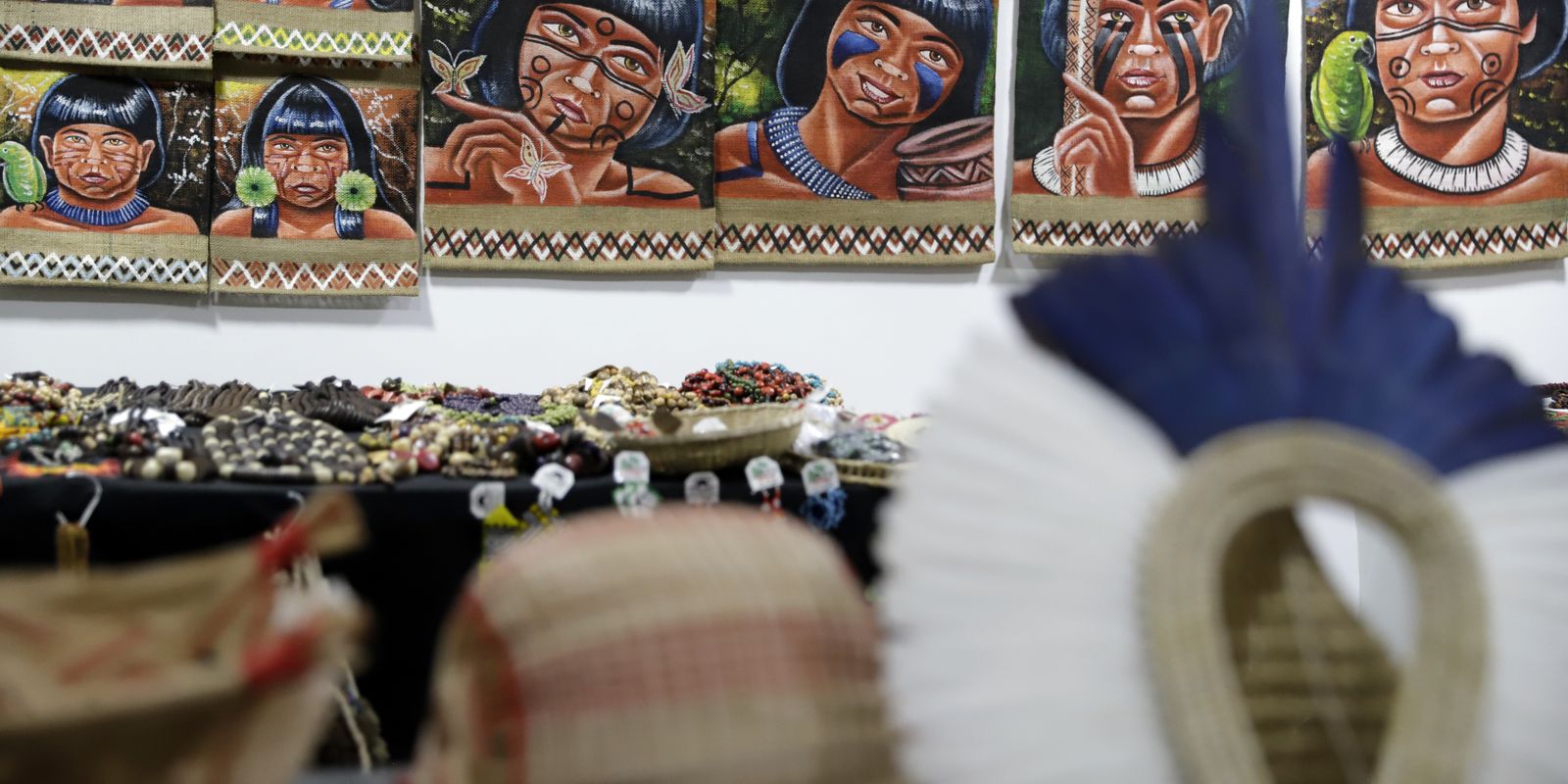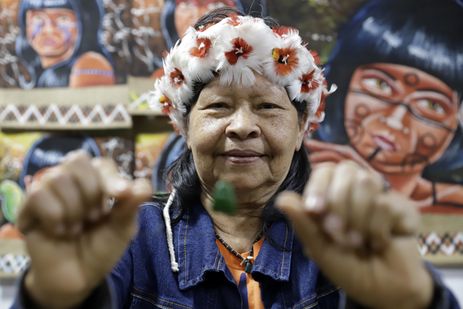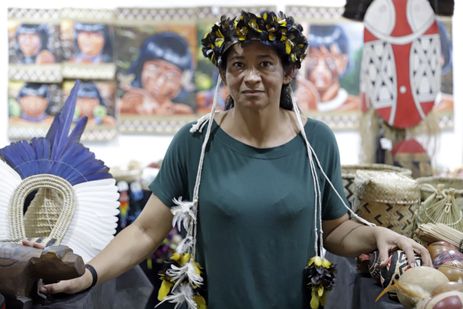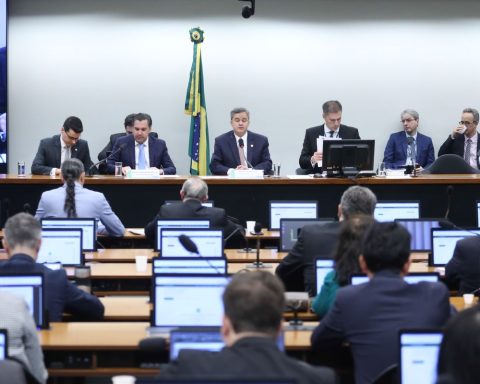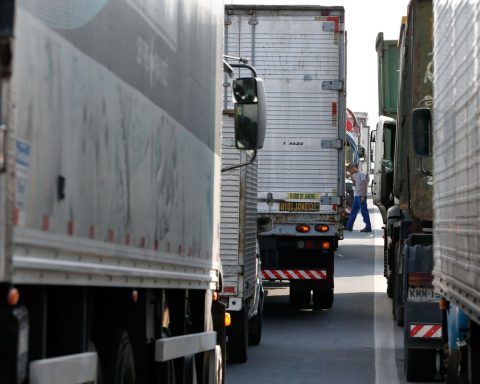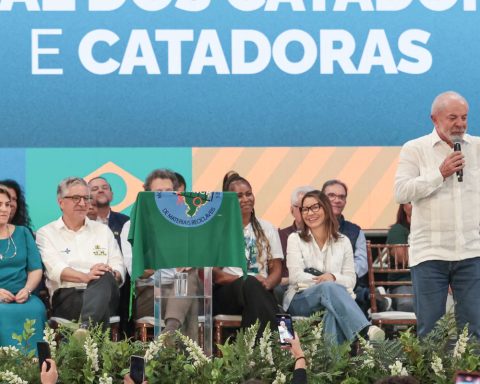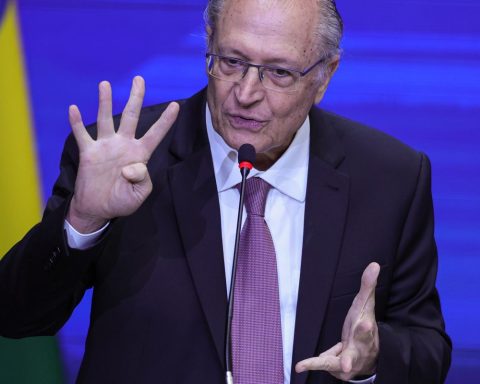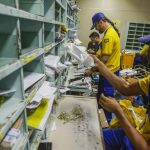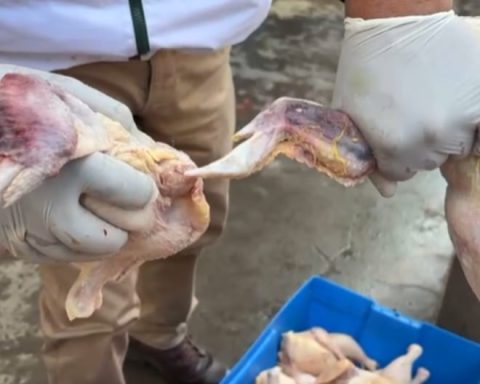Around the neck of indigenous artisan Airy Gavião, 68, the necklace with the muiraquitã (a small stone in the shape of a frog) means much more than just an accessory she makes. “It’s the amulet of warrior women. It has a very strong meaning for me.” So strong that it reminds me of when, at the age of 18, she decided to leave the community of Aturiaí, in Pará, to try her luck in Brasília. She arrived with the muiraquitã and told her story to those who didn’t know her, saying that the crafts she learned at home were the symbol of her own life. 
Until next Friday, August 9, International Indigenous Peoples Day, artisans like Airy will be exhibiting their work at a fair organized by the National Foundation for Indigenous Peoples (FUNAI), in the building where the organization is headquartered, in the center of the capital. “We have been artisans since childhood, when we started collecting seeds. But my real strength was helping my father make wooden pieces.”
Airy Gavião works with all types of crafts, including figurative paintings of indigenous people and nature. She taught the art to her three children, who were born in Brasília. The work she creates is also a way to feel part of the community in Pará. “I miss when I used to make scalded flour. Being there together. Playing. Everyone together and singing. I miss the sense of community.”
Ancestral knowledge
The exhibition features pieces made by indigenous people from the Gavião, Pataxó, Kariri Xocó, Guajajara and Bororo peoples.
According to the director of Promotion of Sustainable Development at Funai, Lucia Alberta, the fair can help generate income and strengthen productive activities that enrich indigenous culture.[É] It is always good to emphasize that everything you see at an indigenous fair is the result of ancestral knowledge represented in the small objects that you can see in this exhibition”, stated Lucia Alberta.
Artisan Murian Pataxó, 49, who lives in an indigenous community in the Paranoá administrative region, says that this ancestral knowledge represents a way of life and income for them. Murian recalls that everything she learned was from her parents and grandparents in Santa Cruz Cabrália, Bahia, and she remembers when they were taught to gather morototó and açaí seeds, for hours on end on a string.
“Everything is handmade. These bracelets and necklaces are part of who we are,” says Murian. The artisan emphasizes that indigenous crafts need to have cultural and commercial visibility.
Generations
The younger generations are sure that they will not let this art dry up with the passing of time. Craftswoman Bruna Togojebado, 30, says she is happy to explain what she has learned to her 9-year-old daughter. “I am pregnant and I want the best for those who come after us. We pass this wisdom on from parents to children.”
One new thing is that the younger ones are teaching the older ones how to sell products online.
In fact, the location where the products were displayed and sold was a source of discontent for the indigenous people on the first day of the fair. The artisans complained to Funai that they would like a more visible space in the Parque Cidade Corporate Building itself.
Craftswoman Jacy Pataxó, 50, says that the pieces are on display in a hallway where there is little traffic and that adjustments need to be made. “We depend on sales. We want a more visible place.”
When asked by the reporter about this topic, Funai did not comment.
Service
Indigenous Art Exhibition
Date: Until August 9th, Monday to Friday, from 9am to 6pm.
Address: South Commercial Sector, Block 9, Asa Sul – Brasília/DF
Location: Parque Cidade Corporate Building – Tower B
*Contributed by Ana Carolina Alli, intern under the supervision of Marcelo Brandão
